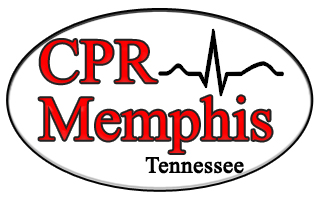UNKNOWN LAB REPORT
Unknown Number 118 – Gram Positive
Alternate Number 1 – Gram Negative
Susan Berberich
Biology 203 – Microbiology
Fall/2013
Introduction:
It has been estimated that there are 5 nonillion or 5 x 1030 bacteria on earth today. (1) Identification is key to know exactly how a particular bacteria should be treated or if treatment is necessary at all. The following study was performed using all of the methods used in general microbiology laboratory class.
Materials and Methods
Day 1 – October 22, 2013
Unknown mixed culture bacteria sample number 118 was received from the lab instructor. The Lab Manual for General Microbiology – Biology 203 by McDonald et. al (2) was followed for all procedures performed. The first procedure performed was an isolation streak as described in the lab manual on a nutrient agar plate. Three isolation streaks were performed from mixed culture. These were identified as Berb#1, Berb#2 and Berb#3. The agar dishes were put in the incubator and left for 48 hours.
Day 2 – October 24, 2013
Agar dishes were removed from the incubator and examined. The following results were noted:
Berb#1 – Isolated colonies – growth of one color
Berb#2 – Isolated colonies – growth of one color
Berb#3 was determined to be the best option distinctly different colonies. These were named Light#1 and Creamy#2. Light#1 – light almost transparent growth. Creamy#2 – darker off white, creamy appearance growth. Two new agar plates (Light#1 and Creamy#2) were inoculated and placed in the incubator for 120 hours.
Day 3 – October 29, 2013
Reviewed growth on agar plates Light#1 and Creamy#2. Visually both plates had growth that appeared different per plate. The next step was to perform a Gram Stain of the two different samples following the procedures listed in the lab manual. The purpose of the Gram Stain was to see if the samples were Gram Positive (purple) or Gram Negative (red). Bacteria shape was also noted during the process. The following results were noted:
Light#1 – Gram Positive – Coccus
Creamy#2 – Gram Positive – Coccus and Gram Negative – Bacillus
A second Gram Stain of Creamy#2 was performed with the following results:
Creamy#2 – Gram Positive – Coccus and Gram Negative – Bacillus
With mixed results from sample Creamy#2, a new agar plate was inoculated from streak plate Berb#3. Original agar plate Creamy#2 was thrown away and a new Creamy#2 was placed in the incubator for 48 hours.
Day 4 – October 31, 2013
Reviewed growth on agar plate Creamy#2. Performed a Gram Stain with the following results:
Creamy#2 – Gram Negative – Rods
Threw all agar plates away except :
Berb#3 – Original streak plate for colony isolation.
Light#1 – Gram Positive Cocci Bacteria
Creamy#2 – Gram Negative Rod Bacteria
Reviewed the Unknown Chart provided by the lab instructor which listed possible organisms and corresponding test results. Based on this chart, the following agar plate tests were ran to narrow the possibilities of which Gram Positive and which Gram Negative made up the mixed unknown culture.
Mannitol Salt Agar (MSA) – Mannitol fermentation – check for acid production. Plates labeled MSA Light#1 and MSA Creamy#2
Eosin Methylene Blue (EMB) – Lactose fermentation – check for acid production. Plates labeled EMB Light#1 and EMB Creamy#2
MacConkey Agar – Lactose fermentation – check for acid production. Plates labeled Mac Light#1 and Mac Creamy#2
Sample plates Berb#3, Light#1 and Creamy#2 were placed in the refrigerator. Test plates were inoculated according to lab manual instructions and placed in the incubator for 120 hours.
Day 5 – November 5, 2013
Reviewed Gram Positive agar plates. Based on the Unknown Chart provided there were three Gram Positive Cocci possibilities: Staphylococcus aureus, Staphylococcus epidermidis, Enterococcus faecalis. The test results were:
MSA Light#1 – Weak acid production – Indication – S. aureus, E. faecalis
EMB Light#1 – Weak acid production – Indication – S. aureus, S. epidermidis, E. faecalis
Mac Light#1 – Weak acid production – Indication – S. aureus, S. epidermidis, E. faecalis
Reviewed Gram Negative agar plates. Based on the Unknown Chart provided there were five possible Gram Negative Rod possibilities: Escherichia coli, Klebsiella pneumonia, Enterobacter aerogenes, Proteus vulgaris, Pseudomonas aeruginosa. The test results were:
MSA Creamy#2 – Weak acid production – Indication – E. coli, K. pneumonia, E. aerogenes
EMB Creamy#2 – Weak acid production – Indication – E. coli, K. pneumonia, E. aerogenes Growth was pink/purple colonies not metallic green which indicates E. coli – E. coli eliminated from possibilities
Mac Creamy#2 – Weak acid production – Indication – E. coli, K. pneumonia, E. aerogenes
Based on these results decided to run the following tests next lab period:
Gram Positive – Light#1 – Nitrate Test – differential media determines if an organism is capable of reducing Nitrate to Nitrite. Will differentiate between S. aureus and E. faecalis.
Gram Negative – Creamy#2 – Urea Test – used to determine is an organism is capable of hydrolyzing urea using the enzyme urease. Will differentiate between K. pneumoniae and E. aerogenes
Gram Negative – Creamy#2 – Methyl Red Test – used to determine if an organism produces acid from glucose metabolism. Will differentiate between K. pneumoniae and E. aerogenes.
Day 6 – November 7, 2013
The following media was inoculated according to procedures outlined in the lab manual:
Gram Positive Light#1 – Nitrate Test
Gram Negative Creamy#2 – Urea Test
Gram Negative Creamy#2 – Methyl Red Test
Day 7 – November 12, 2013
Reviewed tests ran during previous lab period and noted the following results:
Gram Positive – Light#1 – Nitrate Test – broth turned red after adding zinc – Negative result – Indication – Enterococcus faecalis
Gram Negative – Creamy#2 – Urea Test – no change in color – Negative result – Indication – Enterobacter aerogenes
Gram Negative – Creamy#2 – Methyl Red Test – yellow after methyl red was added – Negative result – No acid production – Indication – Enterobacter aerogenes
These results were reviewed. Entercoccus faecalis was correct for Gram Positive. Enterobacter aerogenes was incorrect for Gram Negative.
Day 8 – November 14, 2013
Gram stained sample from Gram Negative – Creamy#2. Determined growth to be Gram Positive Rods. Determined that original streak of Unknown Sample #118 had been contaminated with unidentified bacteria. Received sample ALT 5 – pure Gram Negative Bacteria of Unknown Sample #118. The following media were inoculated with ALT 5 according to procedures outlined in the lab manual:
ALT5 MAN – Mannitol Broth
ALT5 MAC – MacConkey Agar Plate
ALT5 MR – Methyl Red Broth
ALT5 UR – Urea Broth
ALT5 SC – Simmon’s Citrate Slant
Placed media in the incubator for 120 hours.
Day 9 – November 19, 2013
Reviewed tests performed on 11/14/13 with the following results:
ALT5 MAN – Mannitol Broth – Negative – No Acid production – Indication – Proteus vulgaris, Pseudomonas aeruginosa
ALT5 MAC – MacConkey Agar Plate – Negative – No acid production – Indication – Proteus vulgaris, Pseudomonas aeruginosa
ALT5 MR – Methyl Red Broth – Positive – Indication – Escherichia coli, Klebsiella pneumoniae, Proteus vulgaris
ALT5 UR – Urea Broth – Negative – Indication – Escherichia coli, Enterobacter aerogenes, Pseudomonas aeruginosa
ALT5 SC – Simmon’s Citrate Slant – Negative – Indication – Escherichia coli, Proteus vulgaris
Though the results of the Urea test were conflicting with four other test the indication was the Gram Negative ALT5 was Proteus vulgaris. This was incorrect.
Received ALT5 #2 – Pure culture of Gram Negative Unknown #118.
The following media were inoculated according to procedures outlined in the lab manual:
ALT52 MR – Methyl Red Broth
ALT52 LAC – Lactose Broth
ALT52 MAN – Mannitol Broth
ALT52 UR – Urea Broth
Placed in incubator for 48 hours.
Day 10 – November 21, 2013
Reviewed test ran on ALT5 #2 to identify Gram Negative Unknown. The following results were noted:
ALT52 MR – Methyl Red Broth – Negative – Indication – Enterobacter aerogenes, Pseudomonas aeruginosa
ALT52 LAC – Lactose Broth – Negative – Indication – Proteus vulgaris, Pseudomonas aeruginosa
ALT52 MAN – Mannitol Broth – Negative – Indication – Proteus vulgaris, Pseudomonas aeruginosa
ALT52 UR – Urea Broth – Negative – Indication – Escherichia coli, Enterobacter aerogenes, Pseudomonas aeruginosa
These results pointed to Pseudomonas aeruginosa however this was incorrect for Unknown #118- ALT5#2. Gram Negative for #118 was Klebsiella pneumoniae. No test results indicated this bacteria.
Received ALT-1 a pure culture of a Gram Negative bacteria. Performed the following tests on ALT-1.
Ran the following tests according to procedures outlined in the lab manual on ALT-1:
ALT1 MAN – Mannitol Broth
ALT1 LAC – Lactose Broth
ALT1 SC – Simmon’s Citrate Agar Slant
ALT1 MR – Methyl Red Broth
ALT1 UR – Urea Broth
ALT1 NT – Nitrate Broth
Placed in the incubator for 120 hours.
Day 11 – November 26, 2013
Reviewed test performed to identify Gram Negative of ALT-1. The following results were noted:
ALT1 MAN – Mannitol Broth – Positive for acid production – Indication – Escherichia coli, Klebsiella pneumoniae, Enterobacter aerogenes
ALT1 LAC – Lactose Broth – Positive for acid production – Indication – Escherichia coli, Klebsiella pneumoniae, Enterobacter aerogenes
ALT1 SC – Simmon’s Citrate Agar Slant – Positive – Indication – Klebsiella pneumoniae, Enterobacter aerogenes, Pseudomonas aeruginosa
ALT1 MR – Methyl Red Broth – Negative – Indication – Pseudomonas aeruginosa, Enterobacter aerogenes
ALT1 UR – Urea Broth – Negative – Indication – Escherichia coli, Enterobacter aerogenes, Pseudomonas aeruginosa
ALT1 NT – Nitrate Broth – Positive – Indication – Klebsiella pneumoniae, Enterobacter aerogenes, Proteus vulgaris, Pseudomonas aeruginosa
Based on these results ALT-1 Gram Negative was Enterobacter aerogenes. This was correct.
Results Summary
Gram Positive Unknown Pathway
- Gram Stain
- MSA Agar
- EMB Agar
- MacConkey Agar
- Nitrate Broth
Colonies on original streak of Unknown #118 were light white almost transparent in appearance. Table 1 summarizes each test, purpose, materials and results for Gram Positive Unknown #118 pathway.
Gram Negative Unknown Pathway
- Gram Stain
- Mannitol Broth
- Lactose Broth
- Simmon’s Citrate Agar Slant
- Urea Broth
- Methyl Red Broth
- Nitrate Broth
Colonies were creamy in appearance. Table 2 summarizes each test, purpose, materials and results for Gram Negative ALT-1 pathway.
Table 1. Gram Positive Unknown – Enterococcus faecalis
|
Test
|
Purpose |
Main Materials |
Observations |
Results |
| Gram Stain | To determine the Gram reaction of the bacterium – Gram Positive or Gram Negative | Crystal VioletGram Iodine
Gram Decolorizer Gram Safranin
|
Purple Cocci | Gram Positive Cocci |
| Mannitol Salt Agar Test | To determine the ability of a bacterium to ferment mannitol producing acid | Mannitol Salt Agar – phenol red PH indicator | Slight color change of agar to yellow | Acid produced |
| Eosin – Methylene Blue Agar | To determine the ability of a bacterium to ferment lactose producing acid | Agar with Eosin and Methylene Blue | Very light pink colonies | Acid produced |
| MacConkey Agar | To determine the ability of the bacterium to ferment lactose | Agar with bile salts and crystal violet | Light pink purple colonies | Acid produced |
| Nitrate | To determine the ability of the bacterium to reduce nitrate to nitrite or other nitrogenous compounds | Nitrate Broth tubes, Nitrate Reagent A, Nitrate Reagent B, Zinc | No change after adding Reagent A and Reagent B. Turned red after adding Zinc | Negative |
Table 2. Gram Negative Unknown – Enterobacter aerogenes
|
Test |
Purpose |
Main Materials |
Observations |
Results |
| GramStain | To determine the Gram reaction of the bacterium – Gram Positive or Gram Negative | Crystal VioletGram Iodine
Gram Decolorizer Gram Safranin
|
Pink Rods | Gram NegativeRods |
| MannitolBroth | To determine the ability of a bacterium to ferment mannitol producing acid | Mannitol Broth – phenol red PH indicator | Broth changed from red to yellow indicating acid production | Positive for acid productions |
| LactoseBroth | To determine the ability of the bacterium to ferment lactose producing acid | Lactose Broth | Broth changed to yellow indicating acid production | Positive for acid production |
| SimmonsCitrate | To determine the ability of the bacterium to metabolize ammonium phosphate – to use citrate as its sole carbon source | Citrate agar slant – sodium citrate, ammonium phosphate, PH indicator bromthymol blue | Agar turned blue – PH > 7.6 | Positive for CO2 and pyruvic acid production |
| Methyl Red | To determine the ability of the bacterium to ferment glucose producing acid | Broth containing glucose, peptone and a PH buffer, PH indicator methyl red | Broth turned yellow | Negative for glucose fermentation |
| Urea | To determine the ability of the bacterium to hydrolyze urea | Urea Broth, PH indicator phenol red | Yellow broth | Negative for hydrolysis of urea, no ammonia production |
| Nitrate | To determine the ability of the bacterium to reduce nitrate to nitrite or other nitrogenous compounds | Nitrate Broth tubes, Nitrate Reagent A, Nitrate Reagent B, Zinc | No change in color after adding zinc to the broth tube | Positive for nitrate reduction |
Discussion / Conclusion
As noted in the Materials and Methods section of this report, the Gram Positive was identified after the first round of testing. A pure Gram Positive colony was grown from the original streak of Unknown Sample #118, Gram Stained and basic testing lead to the correct identification of Enterococcus faecalis.
Also as noted in the Materials and Methods section, the identification of the Gram Negative bacteria of Unknown Sample #118 was incorrect multiple times. A uniquely different colony was selected from the original streak of #118 and grown and Gram Stained as Gram Negative Rods. However testing of this inoculated plate led to the conclusion that multiple species were growing on this plate. Testing was performed on alternate versions of Unknown #118 Gram Negative but probable lab error during inoculation of media lead to incorrect results. As noted, testing on a new alternate of a different species lead to a correct identification of a Gram Negative species Enterobacter aerogenes.
Scientific classification
Kingdom: Bacteria
Phylum: Proteobacteria
Class: Gamma Proteobacteria
Order: Enterobacteriales
Family: Enterobacteriaceae
Genus: Enterobacteriaceae
Species: Enterobacter aerogenes
Enterobacter aerogenes is a gram negative, facultative anaerobe rod whose name comes from the Greek enteron meaning “intestines” which is its natural habitat in the intestines of animals. While it is generally found in the gastrointestinal tract, it has also been found in various wastes, hygienic chemicals and soil. Often found in nosocomial environments it is an opportunistic pathogen that typically only infects those with a compromised immune system. Surgical procedures, intravenous catheter insertions and some antibiotic treatments are common procedures that can introduce E. aerogenes that can lead to respiratory infections, urinary tract infections, osteomyelitis, septic arthritis and blood stream infections (3). E. aerogenes is closely related to and often misidentified as Klebsiella pneumoniae however K. pneumoniae lacks Beta Lactamase. In the mid 1980’s, E. aerogenes with Extended-Spectrum Beta-Lactamase were discovered meaning the bacterium was also capable of carbapenamase production. This has made E. aerogenes infection epidemic and endemic worldwide (4).
Bibliography
- What is Bacteria? What are Bacteria? Last updated March, 2013.
- McDonald, V., Thoele, M., Salsgiver, B., Gero, S., Lab Manual for General Microbiology, Revised April 2011.
- www.britannica.com/EBchecked/topic/685512/Enterobacter
- www.biomedcentral.com/1471-2180/4/49





